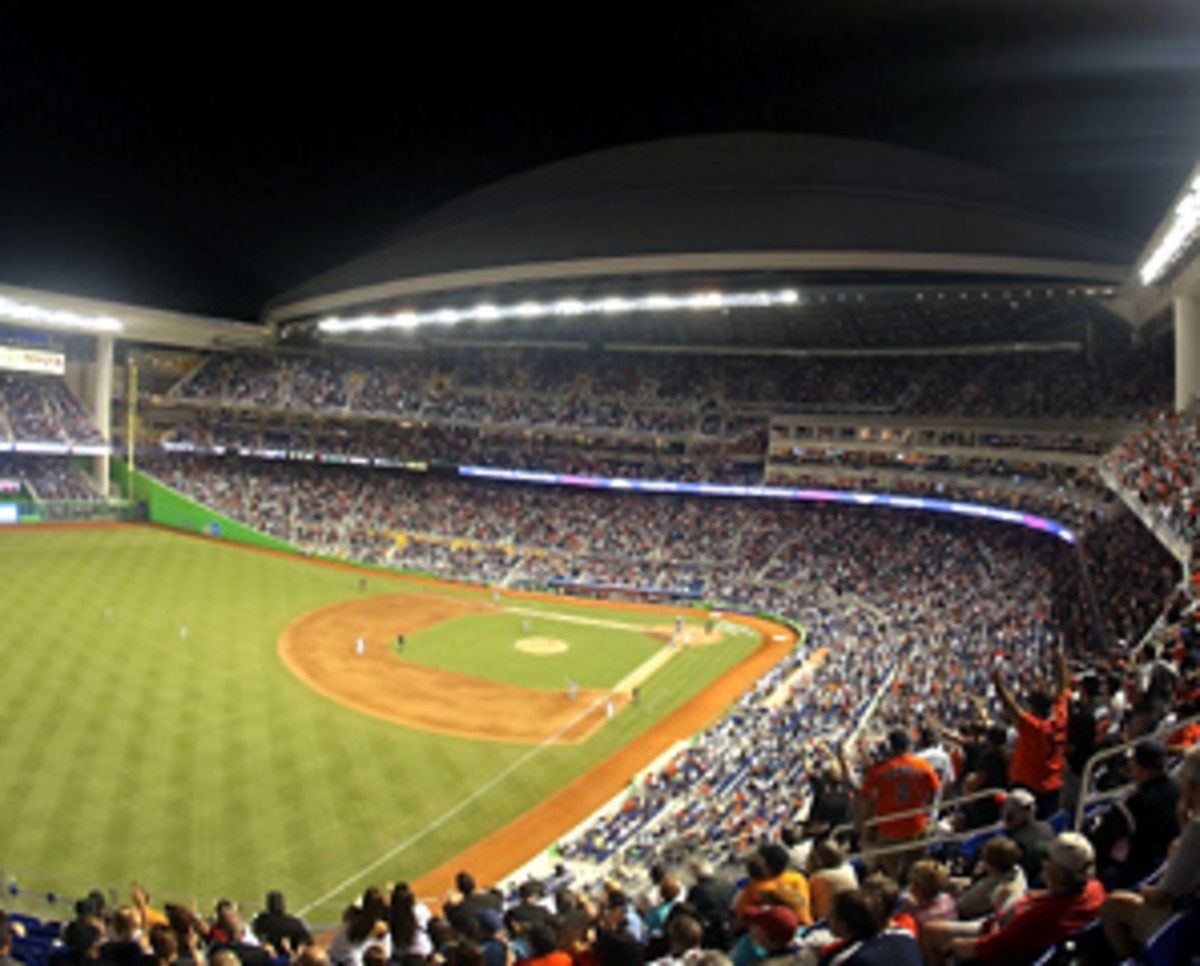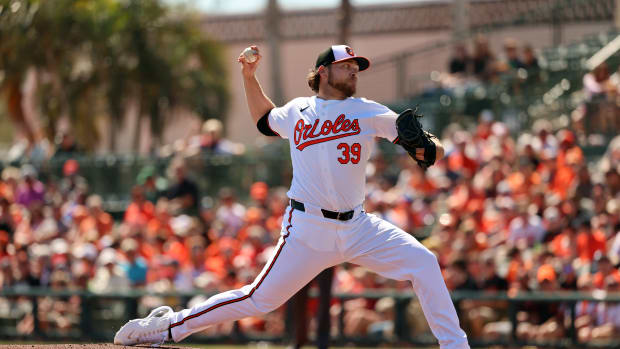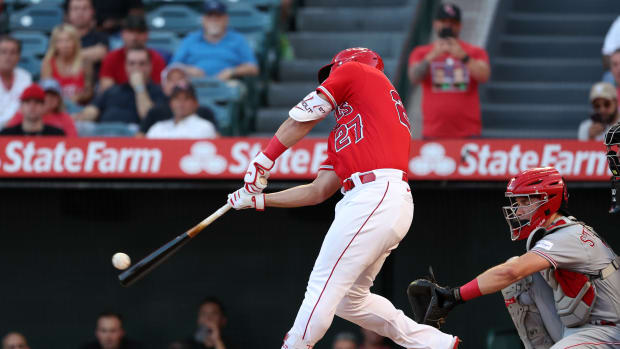Opening night loss can't spoil debut of Marlins' state-of-the-art ballpark
Kyle Lohse took a no-hitter (just a hit-by-pitch from perfect) into the seventh inning and the defending world champion Cardinals spoiled the debut -- if only mildly -- of the $515 million ballpark that is being counted on to be a game-changer for the Marlins and a chest-pumping for Commissioner Bud Selig and baseball.
"It doesn't matter how the ballpark looks, you gotta win the game," said new $106 million Marlins shortstop Jose Reyes, who broke up the no-no and had two hits in the game. "We are disappointed we didn't get a victory for the fans because they supported us for all nine innings."
The final score was 4-1, but it hardly mattered in the grand scheme of baseball in South Florida. The ballpark is a new piece of Americana and the energy is South Beach-quality.
The Miami Marlins, once a candidate for contraction, have a new name, new uniforms and some new big-ticket players. And yes, they have a spiffy new state-of-the-art ballpark. But mostly importantly, they have a new lease on life.
This feels like a major league city now. It feels like a big-league team. These sound like big-league fans, and home-centric ones to boot.
"Every Opening Day, it is my job to provide hope and faith in as many places as possible," Selig said almost two hours before the first pitch. "It proves how healthy this sport is."
Today, consider it a success, even if the tally wound up in the loss column after two hours and 42 minutes of crisply played baseball, which began with Marlins starter Josh Johnson firing a 93 mph fastball for a called strike amid popping camera flashes. After that, he was mostly as bad as the Little Havana parking situation in the early going, giving up three runs.
This is just one loss, but the question now is whether the team actually is vibrant enough to be an annual threat in the NL East, instead of the mere pesky, underpaid and underappreciated also-ran it tends to be. The loss wasn't an egregious one; these are the defending champs, even if they are sans Albert Pujols. Heck, this ballpark even gave the Marlins the guts to jump in the Pujols bidding until very late with the Cardinals and Angels.
The Marlins certainly look the part of a contender on paper. The Marlins, anticipating big things and consistent crowds here, dumped $106 million on Reyes, $58 million on Mark Buehrle and $27-plus million on closer Heath Bell.
• GALLERY: Welcome to Marlins Ballpark
"[A new ballpark] doesn't mean you're going to be successful; that's up to the management," Selig said. "But without it, you have no chance."
The Marlins, once a sorry franchise in almost every respect, have more than a chance. They have an energy befitting of a city that knows how to party on South Beach.
"It was quite an event they put on," said new Cardinals manager Mike Matheny, who picked up the victory in his managerial debut. "The energy is something I have never seen before here in Miami.
"It is always nice to win on Opening Day, but this is just one game. They have a good team."
This night featured an atmosphere as awesome as a Super Bowl or a World Series with its pregame ceremony including The Greatest of All Time, Muhammad Ali.
"It was a very unique Opening Day, very special" new manager Ozzie Guillen said. "But it is no excuse [for losing]."
Typical Ozzie. Atypical Marlins. This was large-market production. The Marlins just might be able to claim they are big-market club now.
"You can only put on the field what you can generate in revenue," Selig said.
"Five to 10 years ago, you could have made the case this wouldn't have happened here."
And the fans, generally derided for being among the worst in sports, definitely brought the energy on Day 1. Every pitch, every call was accompanied with an appropriate fan reaction you're used to hearing in New York, Boston or Philadelphia.
You don't even have to watch the game to follow along. You can hear it.
Even an early Cardinals lead thanks to a David Freese two-run single in the first didn't quiet things.
"That is something you want to do every game," Freese said of getting off to a quick start in the face of what can be a real home-field advantage finally for the Marlins. "This crowd was electric. We were excited to be a part of this."
Freese had three hits in the game and his two-run single was all Lohse (1-0) would need.
"Where's [Chris] Carpenter?" Guillen joked after the game.
"Lohse threw a tremendous game ... everything was Lohse. He kept hitters off balance."
With a sold-out capacity crowd of just 36,601, it is the most intimate park in baseball, smaller even than Fenway Park. That is not to say this is a quiet place, particularly not with the hip-hop, pop, rap and latino music blaring over the sound system.
And in the realm of natural noise, fans are right on top of the action, something you did not get before at Marlins games. Even the fish in the aquarium behind home plate, one of this stadium's distinctions, had to feel the energy.
There is no longer the question of which team these fans are rooting for, which hasn't always been the case. You could go to Marlins games, close your eyes, and feel like you're in New York or Philly -- except not as loud or as involved.
"They played in a place that was a football stadium -- clearly a place people didn't want to go to," Selig said. "Does this make a huge difference? You bet it does. Huge."
In the past, the Marlins fans might have booed a hit to break up the no-hitter, even if it was their team's batter up there. Here, there was nary any applause for the surprising efforts of Lohse.
This played like a pitcher's park in Game 1 and it figures to play big and tough on power hitters.
"This one is big ... it's got a lot of space," said Reyes, who knows all about big ballparks having left the Mets' CitiField.
Center field here doesn't look hitter friendly with its dimensions of 418 feet to center. Giancarlo Stanton's second-inning drive wound up just short of the warning track and his right-center field gap drive in the seventh gave Jon Jay too much room to run under it.
Regardless of the lack of Marlins offense and the lost Cardinals no-no, this was a great night, a fun night.
And this is a fun place, complete with its middle of the sixth inning relay race featuring a crab, shark, octopus and a starfish. With temperatures in the low-80s, clear skies, a typical South Florida summer-like breeze and a nearly full moon, it was a perfect night to open a new ballpark.
Its retractable roof, huge video scoreboard, its 360-degree promenade deck, multicultural dining options and retractable window views of downtown Miami (something similar to that at Miller Park in Milwaukee) make Marlins Park a picture of what American baseball should be in a community like South Florida.
"Distinctive" and "remarkable" is how Selig described it in a word, or two.
A life-long Marlins fan, who was in attendance for the first game in team history with his late father back in 1993, remembers this excitement but feels the new energy this park provides.
"This is a special moment. We are finally a major league team," Dwyne Philippin of nearby Fort Lauderdale, Fla., said. "The only way this could be better if my dad was here to see it."
The Marlins in this new home are not only a win for hard-core fans, but a factor in the NL East and around baseball. And, in a town that hosts the wildly popular -- or unpopular, depending on your point of view -- LeBron James-led Miami Heat, the Marlins now transcend sports.
Tampa Bay has Dick Vitale as one of its season-ticket holders and regular rooters; Miami has Louisville Cardinals basketball coach Rick Pitino, who was seen buying ballpark fare in the Burger 305 line hours before the opener. Pitino, who owns a house in Don Shula's Miami neighborhood, is a proud Marlins season ticket holder now, with seats behind the first-base dugout.
"We just did the 360 loop and this place seems tremendous," Pitino said, getting a look at the park in Game 1 of his 81-game package. "It's a big addition to Miami."
Building this ballpark wasn't an entirely popular move in South Florida politics, and still doesn't have 100 percent support. There were continual political battles based on who was going to foot the bill on the $515 million costs and there is an ongoing SEC investigation on bond sales and campaign contributions from the Marlins organization to local and state elected officials.
"Every new ballpark is a trauma," Selig said. "Every one has its difficulties. You can debate the economic advantages. It's the sociological impact. What does it do for the community? With all the new parks, when five years are up, all the critics are gone. It makes that place a better place to live."
... "Mark my words, in five years, you won't find anyone against it."
You will be hard-pressed to find anyone in this building against it here now, not on this night, regardless of the final score. After 18-plus years, and two world championships, the Miami Marlins have finally arrived.



































